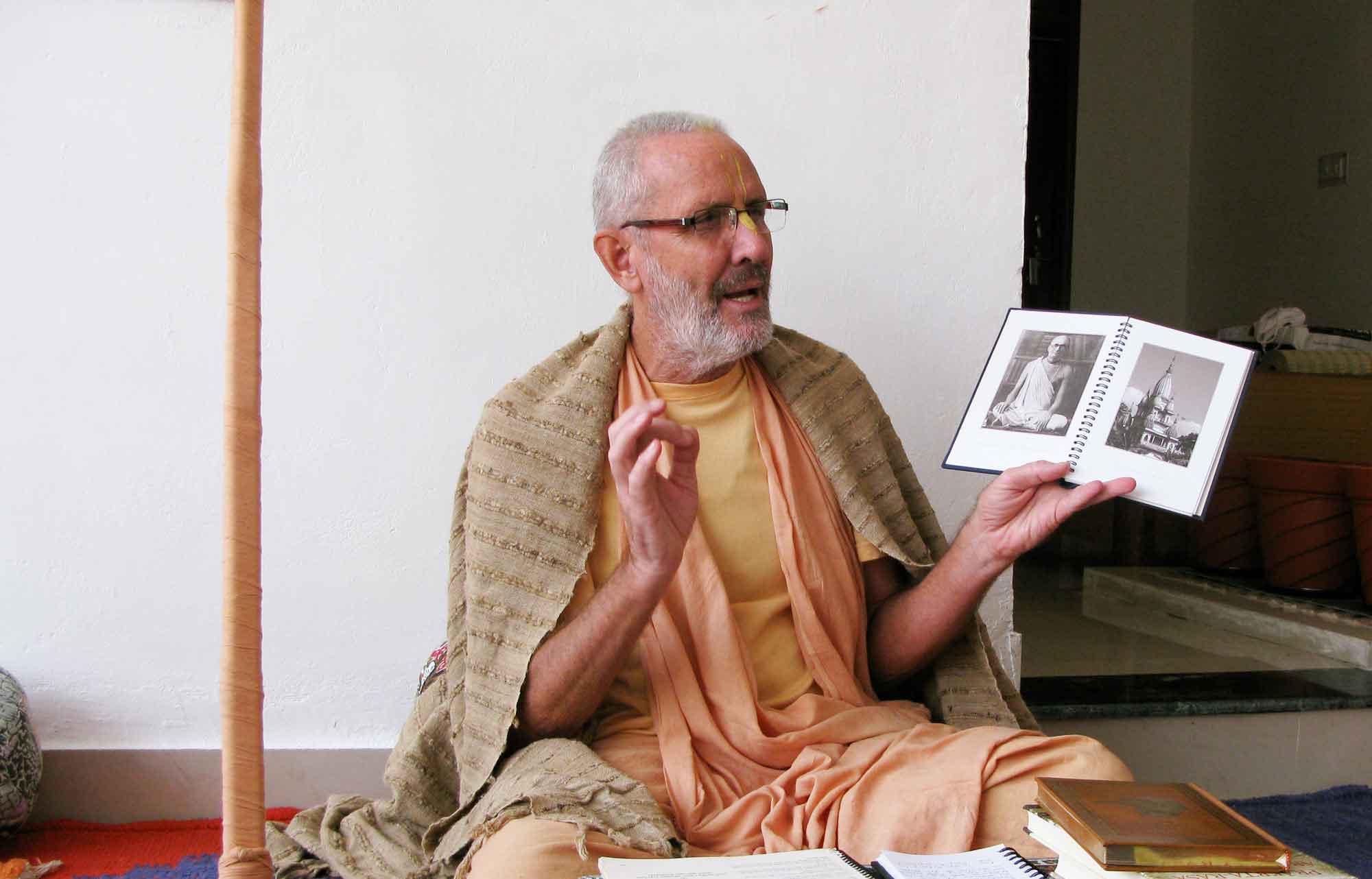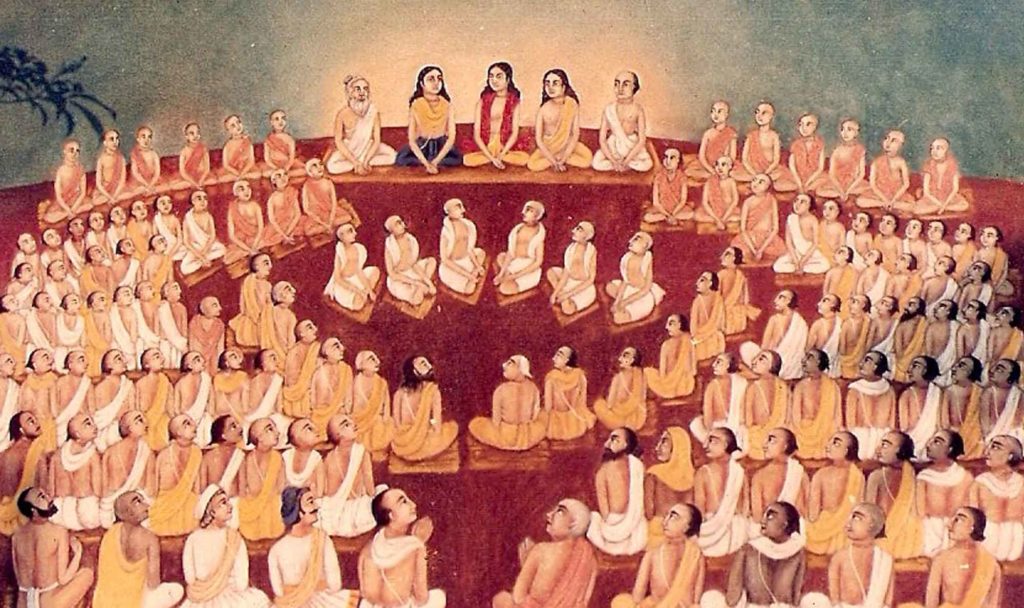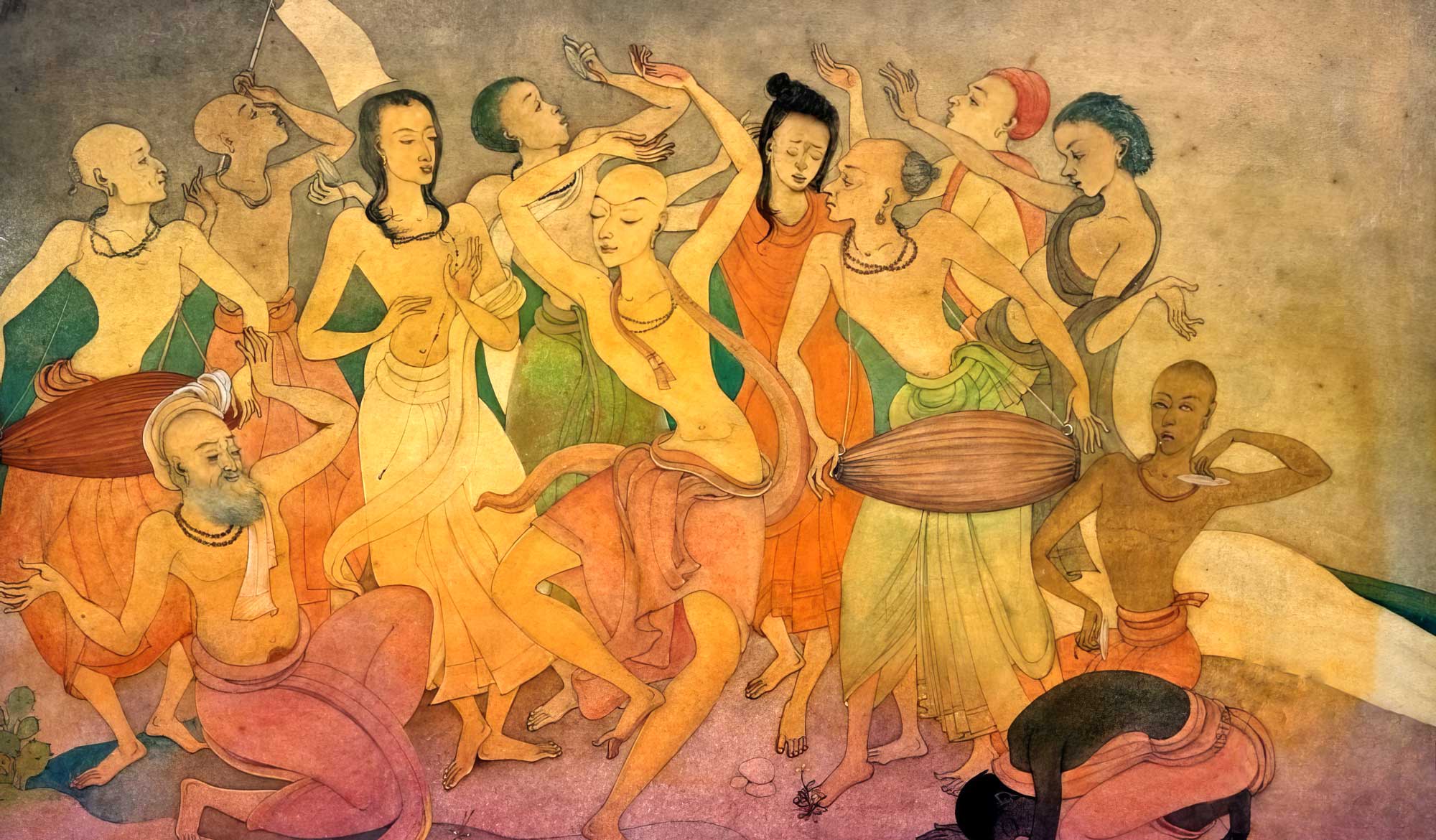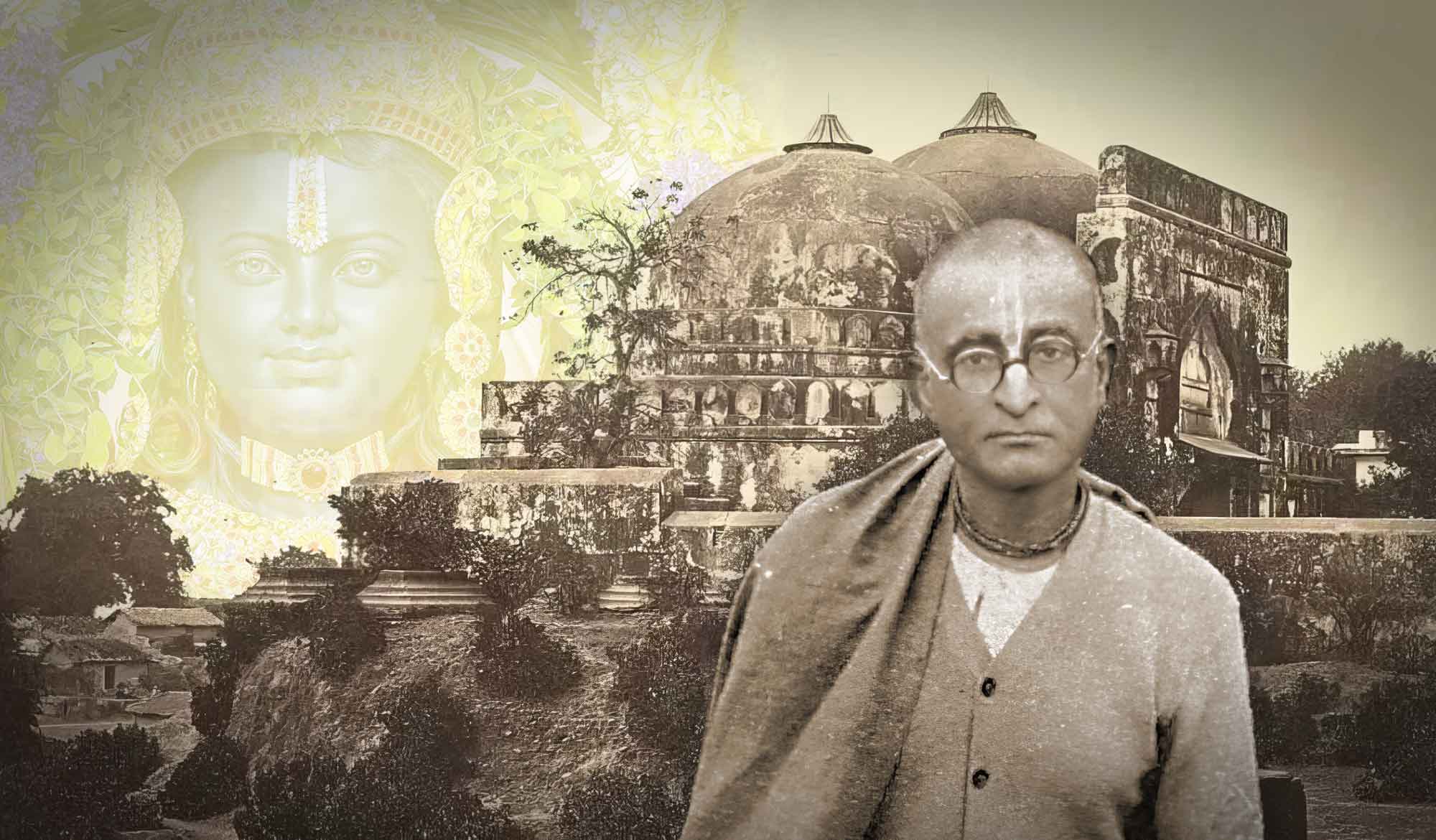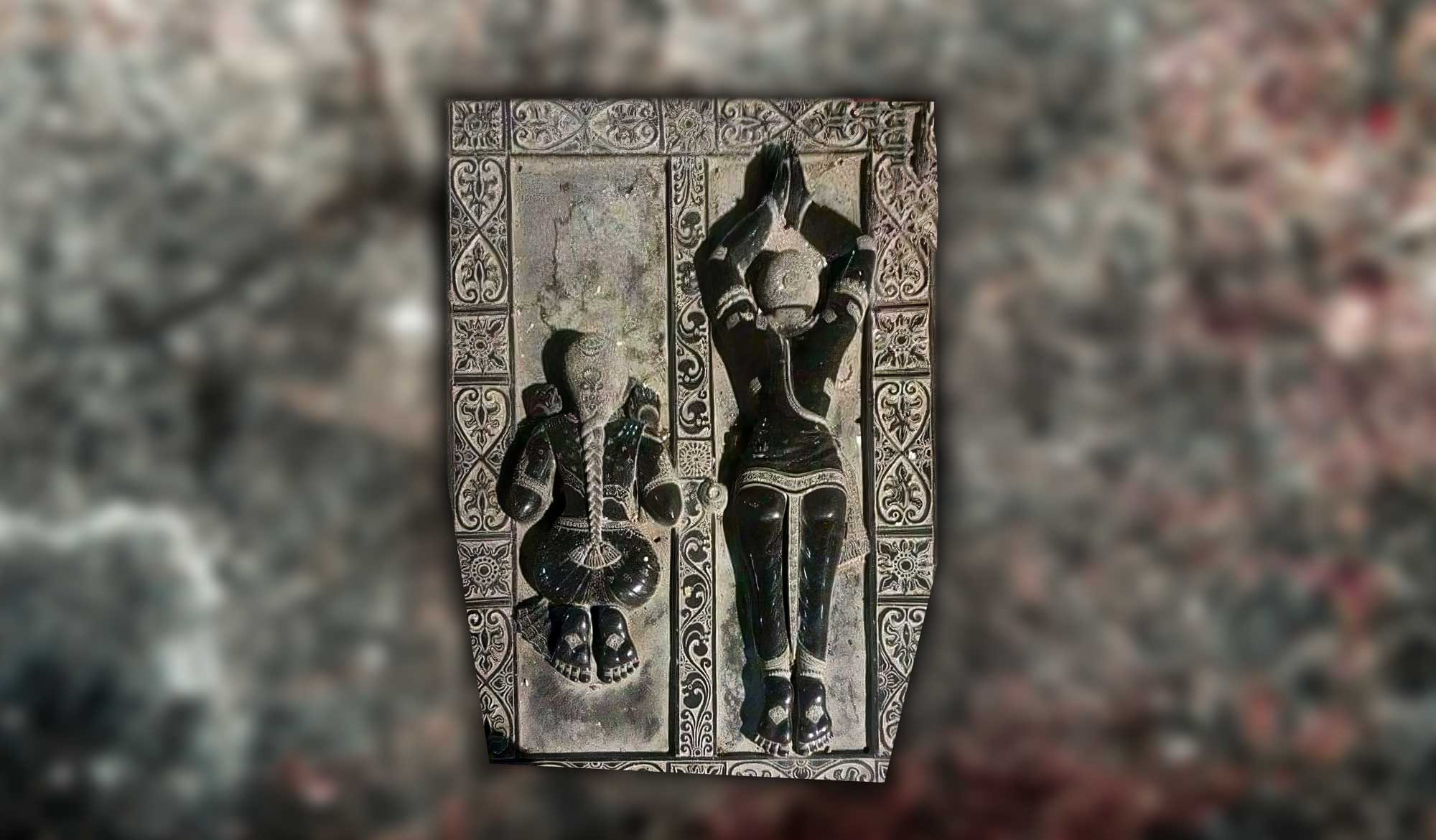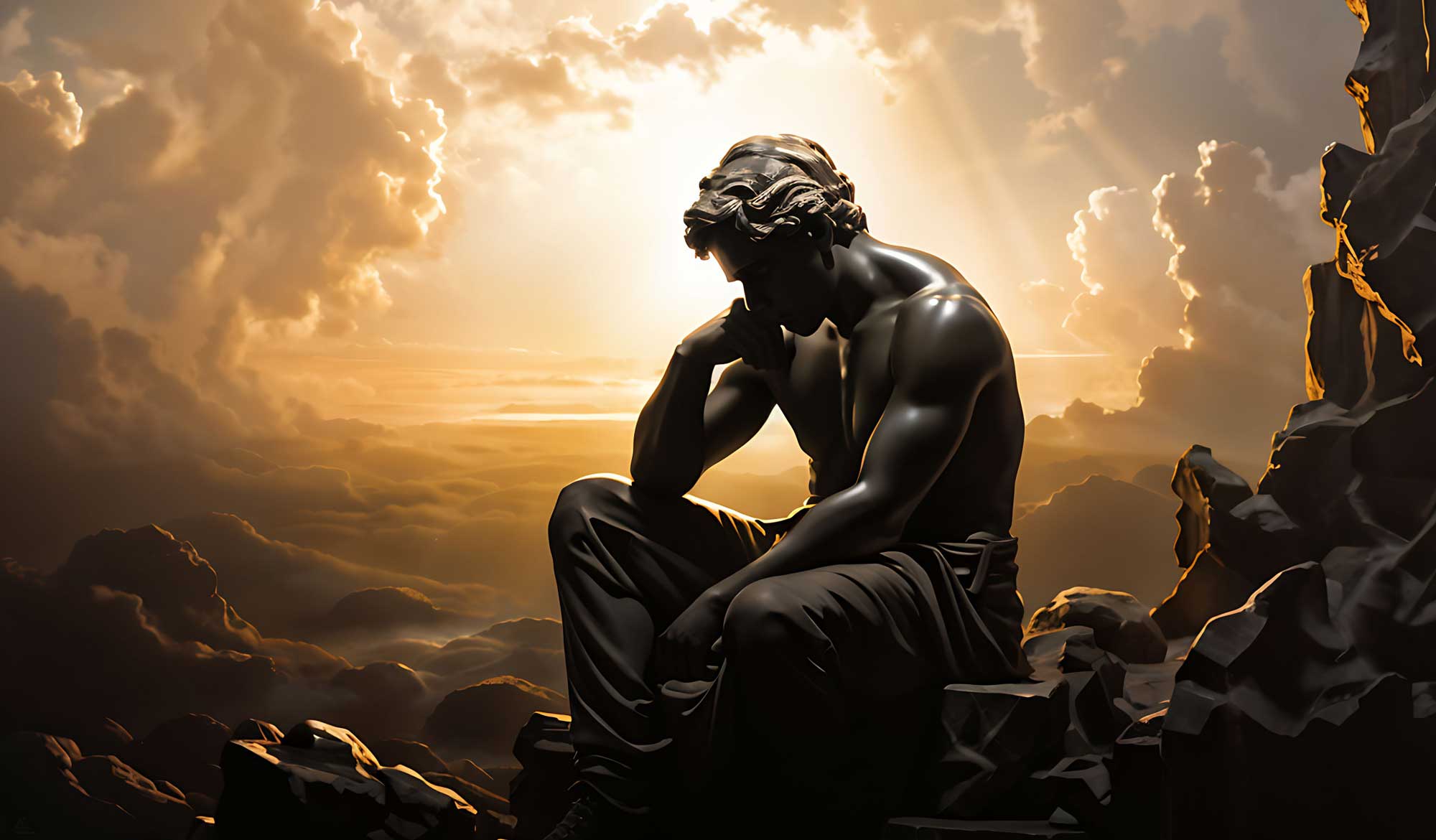Overview
‘The Temple of Understanding’ was written by Swami B.G. Narasingha on January 15th 2004. In this article Swami Narasingha relates the history of the ‘Adbhuta Mandira’ and shows how this can only be the birthplace of Śrī Caitanya Mahāprabhu, and has nothing to do with size and grandeur.
Question: I have heard whispers that the temple being built in Māyāpura, called the ‘Temple of Understanding,’ in some ways falls short of the proper conception of Gauḍīya Vaiṣṇavism. I have also heard that this Temple of Understanding is thought by some devotees to be the Adbhuta Mandira predicted by Śrī Nityānanda Prabhu and Śrīla Bhaktivinoda Ṭhākura. In your opinion is there any truth to this way of thinking?
Answer: Yes, it is true that the Temple of Understanding, as it is being planned today, does fall short of the highest understanding in Gauḍīya Vaiṣṇavism. As for the Adbhuta Mandira predicted by Bhaktivinoda, that has already been manifested by Śrīla Bhaktisiddhānta Sarasvatī Ṭhākura at the birthplace of Śrī Caitanya (Yogapīṭha), the ‘epicentre’ of the spiritual world.
Adbhuta means the most wonderful conception, the conception of mahāprabhu śrī caitanya rādhā-kṛṣṇa nahi anya‘ – the combined form for Rādhā and Kṛṣṇa as Śrī Caitanya – that is the most wonderful conception of Godhead ever to have been revealed. Mahāprabhu is indeed the full-fledged expression of Rasarāja-Mahābhāva and this has been preached all over the world from the Yogapīṭha Mandira by Śrīla Bhaktisiddhānta and his disciples, especially by his disciple Śrīla A.C. Bhaktivedānta Swami Prabhupāda. Śrī Navadvīpa-dhāma Māhātmya by Bhaktivinoda Ṭhākura predicts the Adbhuta Mandira as follows:
“Nityānanda next took Jīva to Advaita’s house, twenty meters to the north. ‘Jīva, see the house of Sītā-nātha, Advaita Ācārya, where the Vaiṣṇavas would meet to discuss Kṛṣṇa. Śrī Advaita worshiped Kṛṣṇa here and, calling loudly, brought this treasure, My Lord Gaurāṅga.”
“After rolling on the ground there, the four men went to the house of Gadādhara, just ten meters to the east. From that place, Nityānanda showed Jiva the various houses of Lord Caitanya’s associates. After seeing the houses of the brāhmaṇa community, they proceeded to the bank of the Ganges in a happy mood. There, at the border of Māyāpura, Jiva saw the Vṛddha Śiva temple.
“Nityānanda Prabhu said, ‘He is the guardian of Māyāpura. This is where the Praudha-māyā energy, Yogamāyā, in charge of spiritual perception, is eternally situated. When our Lord disappears, by His desire, the Ganges will swell. The Ganges water will almost cover Māyāpura for a hundred years, and then the water will again recede. For some time only the place will remain, devoid of houses. Then again, by the Lord’s desire, this place will become prominent, and people will live in Māyāpura as before. All these ghāṭas on the bank of the Ganges will again be manifest, and the devotees will build temples of the Lord.’ Nityānanda Prabhu then said –
adbhuta mandira ei haibe prakāśa
gaurāṅga nitya-sevā haibe vikāśa
“’A wonderful temple will appear, from where Lord Gaurāṅga’s eternal service will manifest.”‘(Bhaktivinoda Ṭhākura – Śrī Navadvīpa-dhāma Māhātmya, Ch. 5 – ‘Śrī Māyāpura and Antardvīpa’)
In Bhaktivinoda Vāṇī Vaibhava the question and answer is also given:
Question: śrī yoga-pīṭhe śrī mahāprabhur bhāvi-mandira sambandhe śrī bhaktivinoda bhaviṣyād vāṇīte ki? (“What was Śrīla Bhaktivinoda’s prediction regarding a future temple of Śrī Mahāprabhu at Yogapīṭha?”)
Answer: adbhuta-mandira ei haibe prakāśa gaurāṉga nitya-sevā haibe vikāśa (“A wonderful temple will appear, from where Lord Gauranga’s eternal service will manifest.”)(Bhaktivinoda Vāṇī Vaibhava – Ch. 11)
Some contemporary Vaiṣṇavas translate the word vikāśa in exclusive favour of their own missionary activities to mean, ‘spread all over the world’ but this is not correct. Vikāśa means to manifest. The prophecy that Kṛṣṇa consciousness will spread throughout the world in every town and village is a different prophecy than the prophecy regarding the Adbhuta Mandira.
It seems quite clear from Bhaktivinoda Vāṇī Vaibhava that the Adbhuta Mandira will be built at Yogapīṭha and not just at any location in Māyāpura. Certainly this is only logical to anyone who understands the spiritual significance of Yogapīṭha!
Again some contemporary translations of the Adbhuta Mandira verse translate the word adbhuta to mean “huge and wonderful” but the word adbhuta has nothing to do with being huge or not being huge – it simply means “wonderful.” However, in some people’s estimation big or huge is always better.
One should also note that in Navadvīpa-dhāma Māhātmya it is said that, “A wonderful temple will appear from which Gaurāṅga’s eternal service will be manifest.” It does not say that the message will first be preached all over the world and then many years after that the Adbhuta Mandira will appear. From the temple (Adbhuta Mandira at Yogapīṭha) established by Śrīla Bhaktisiddhānta, the preaching of the service of Śrī Caitanya has been manifest and is going on for almost 100 years.
In other words, Sarasvatī Ṭhākura manifest the Adbhuta Mandira at Yogapīṭha in 1934 and from there the service of Śrī Caitanya was manifest and was eventually preached and continues to be preached everywhere in the world. In some places ISKCON is preaching, in some places Gauḍīya Maṭha is preaching and in some places humble individuals and humble missions are preaching the saṅkīrtana movement of Śrī Caitanya everywhere in the world, but in each case all these preaching endeavours are ultimately traced back to Śrīla Bhaktisiddhānta at the Adbhuta Mandira at Yogapīṭha.
The fact that the Adbhuta Mandira predicted in Navadvīpa-dhāma Māhātmya has already been manifested is also confirmed by Śrīla Bhakti Pramoda Purī Gosvāmī as follows:
“With the help of a wealthy disciple, the late Sakhī-caraṇa Bhakti-vijaya, Śrīla Prabhupāda fulfilled Śrīla Bhaktivinoda Ṭhākura’s prediction of an extraordinary temple being built at Śrī Yogapīṭha. When the foundation of the skyscraper temple was being dug, on June 13, 1934, a four-armed Deity of Viṣṇu was discovered in the ground. Śrīla Prabhupāda studied the Siddhartha Saṁhitā and, according to the positioning of the weapons and symbols in the Deity’s hands, identified it as Adhokṣaja Viṣṇu accompanied by His Śrī, Bhū and Nīlā potencies. Several expert archaeologists, including Śrī Rāmaprasāda Candra, attested to the Deity’s antiquity. Śrīla Prabhupāda commented later that this was the Deity formerly worshiped by Śrī Jagannātha Miśra himself. This beautiful Deity is currently being worshiped at the Yogapīṭha temple in Māyāpura. (B.P. Purī Gosvāmī, in Of Love and Separation – A few Glimpses at the Lotus Feet of Śrīla Prabhupāda)
We should not overlook the fact that when excavating the foundation for the Adbhuta Mandira at Yogapīṭha that the Adhokṣaja Viṣṇu Deity worshipped by Śrī Jagannātha Miśra was rediscovered. This indeed has great spiritual significance. Therefore, there should be no doubt that Yogapīṭha is the birthplace of Śrī Caitanya and the natural site of the Adbhuta Mandira?
It is a fact that our Guru Maharaja, Śrīla A.C. Bhaktivedānta Swami Prabhupāda wanted to build a magnificent temple at Māyāpura, originally called the ‘Planetarium,’ from which the service of Śrī Caitanya would continue to be preached all over the world, but he never indicated that he thought that his project was the Adbhuta Mandira predicted by Bhaktivinoda, or that his project superseded the work of his Guru Maharaja, Śrīla Bhaktisiddhānta.
The Adbhuta Mandira is not only a temple that is magnificent in terms of its construction but the Adbhuta Mandira must be absolutely wonderful in terms of the highest spiritual conception found in Gauḍīya Vaiṣṇavism. That is the achievement of Śrīla Bhaktivinoda and Śrīla Bhaktisidddhanta.
Whether or not Śrīla Bhaktisiddhānta has built the Adbhuta Mandira at its natural location, ‘Yogapīṭha’ is not actually a contention because his contribution has already been recognised by learned and self-realised pure devotees of the Supreme Lord. Any other claims to the credit for building the Adbhuta Mandira at some other location are simply pretentious and are in fact the product of false pride born of material wealth and grandeur.
As for the Temple of Understanding – if it is indeed to represent the full-fledged conception of Gauḍīya Vaiṣṇavism, then it must culminate in the representation of the highest conception of Divinity in terms of the name, form, and pastimes of the Supreme Lord.
Kṛṣṇa is the emporium of rasa, the enjoyer of rasa, and Rādhārāṇī is the fullest expression of love of God. These two are combined together in the transcendental form of Śrī Caitanya. When these three transcendental forms of Divinity are shown together on one altar, then the highest conception of the name, form, and loving affairs of the Supreme Lord (prema-vilāsa-vivarta) are present.
rādhā kṛṣṇa-praṇaya-vikṛtir hlādinī śaktir asmād
ekātmānāv api bhuvi purā deha-bhedaṁ gatau tau
caitanyākhyaṁ prakaṭam adhunā tad-dvayaṁ caikyam āptaṁ
rādhā-bhāva-dyuti-suvalitaṁ naumi kṛṣṇa-svarūpam
“The loving affairs of Śrī Rādhā and Kṛṣṇa are transcendental manifestations of the Lord’s internal pleasure-giving potency. Although Rādhā and Kṛṣṇa are one in Their identity, They separated Themselves eternally. Now these two transcendental identities have again united, in the form of Śrī Kṛṣṇa Caitanya. I bow down to Him, who has manifested Himself with the sentiment and complexion of Śrīmatī Rādhārāṇī although He is Kṛṣṇa Himself. (Cc. Ādi 1:5)
A temple claiming to be the Temple of Understanding of the Gauḍīya Vaiṣṇavas must indeed culminate in the above understanding, otherwise it certainly falls short of the ultimate conception of transcendental love affairs of the Supreme Person.
Our Guru Maharaja first established the Caitanya Candrodaya Mandira at Māyāpura by installing the Deities of Śrī Gauranga and Śrī Śrī Rādhā-Mādhava (Śrī Śrī Gaura-Rādhā-Mādhava). After the departure of Śrīla Prabhupāda some of his disciples somehow lost sight of the conception, mahāprabhu śrī caitanya, rādhā-kṛṣṇa nahi anya, and overshadowed Śrīla Prabhupāda’s original intention by establishing large deities of Śrī Śrī Rādhā-Mādhava along with the Aṣṭa-Sakhīs.
The conception of Śrī Caitanya as the combined form of Śrī Śrī Rādhā-Kṛṣṇa in the present temple of Caitanya Candrodaya has been greatly effaced by the installation of the larger Deities of Śrī Śrī Rādhā-Mādhava and the Aṣṭa-Sakhīs. I have been told that now the plan is to install ten-foot-tall Deities of the Pañca-Tattva and eventually to install large Deities of the paramparā. But in the end it appears that unless something is rectified soon, then the highest conception of Divinity represented in the Deity form of Śrī Śrī Gaura-Rādhā-Mādhava will remain effaced in that temple forever.
One humble sannyāsī in ISKCON (H.H. Bhakti Cāru Swami) once tried to explain to the planning committee that the larger Deity of Gaura-Rādhā-Mādhava must be installed in the Temple of Understanding if indeed the conception established by Śrīla Prabhupāda were to continue. Unfortunately, his humble attempt went unheeded. Now because the current temple plan does not properly represent the Gauḍīya conception of theism in its fullest expression, it is sometimes sarcastically referred to as the ‘Temple of Misunderstanding!’
If the Temple of Understanding is ever completed under its present plan it will be a great embarrassment to the spiritual dignity of Śrīla Prabhupāda as a great Gauḍīya Vaiṣṇava ācārya.
What should be done to set the conception in the right order is that larger Deities of Mahāprabhu and Rādhā-Mādhava should be installed on the centre altar at Caitanya Candrodaya Mandira, Pañca-Tattva and the guru-paramparā should be established on the left altar, and Śrī Śrī Rādhā-Mādhava and the Aṣṭa-Sakhīs should be established on the right hand altar. It seems obvious that this is what Śrīla Prabhupāda intended, otherwise he would not have established the deity forms of Śrī Śrī Gaura-Rādhā-Mādhava in the first place. If this is done then the situation is easily rectified, otherwise all is lost.
Related Articles
- A Rūpānuga’s Constant Meditation Concerning Śrī Ratha Yātrā by Śrīla B.R. Śrīdhara Mahārāja
- Śrī Nimbāditya and Nimbārka Are Not the Same Person by Śrīla Bhakti Prajñāna Keśava Mahārāja
- Ratha Yātrā in Navadvīpa by Śrīla Bhakti Gaurava Narasiṅgha Mahārāja
- A Brief Response to Ratha Yatra in Navadvīpa by Śrīla Bhakti Gaurava Narasiṅgha Mahārāja
- Bhaktivedānta by Śrīla Bhakti Gaurava Narasiṅgha Mahārāja
- Śrīdhara Deva Gosvāmī by Śrīla Bhakti Gaurava Narasiṅgha Mahārāja
- Ativāḍī Apa-Sampradāya by Śrīla Bhakti Gaurava Narasiṅgha Mahārāja
- Hita Harivaṁśa and the Rādhā-Vallabha Sect by Swami B.V. Giri
- The Temple of Understanding by Śrīla Bhakti Gaurava Narasiṅgha Mahārāja
- Māyāpura and the Adbhūta Mandira by Śrīla Bhakti Gaurava Narasiṅgha Mahārāja
- The Adbhūta Mandira and Bhaktivinoda’s Vision by Śrīla Bhakti Gaurava Narasiṅgha Mahārāja
- Nimbārka and Keśava Kāśmīrī by Śrīla Bhakti Gaurava Narasiṅgha Mahārāja
- The Mystery of the History of the Līlā of Dāmodara by Śrīla Bhakti Gaurava Narasiṅgha Mahārāja
- Prabodhānanda and Prakāśānanda by Swami B.V. Giri
Further Reading
- A Discussion in Relation to the Dates of the Six Gosvāmīs by Śrīla Bhaktivinoda Ṭhākura
- Śrī Śrī Rūpa Gosvāmī Prabhu by Śrīla Bhaktivinoda Ṭhākura
- Śrī Śrī Sanātana Gosvāmī Prabhu by Śrīla Bhaktivinoda Ṭhākura
- Śrī Śrī Gopāla Bhaṭṭa Gosvāmī Prabhu by Śrīla Bhaktivinoda Ṭhākura
- Śrī Śrī Jīva Gosvāmī Prabhu by Śrīla Bhaktivinoda Ṭhākura
- Śrī Śrīnivāsa Ācārya Prabhu by Śrīla Bhaktivinoda Ṭhākura
- Śrī Śrī Kṛṣṇa Dāsa Kavirāja Gosvāmī Prabhu by Śrīla Bhaktivinoda Ṭhākura
- Śrī Śrī Prabhu Rāmacandra Gosvāmī by Śrīla Bhaktivinoda Ṭhākura
- Kavi Rāma Prasāda (The Poet Rāma Prasāda) by Śrīla Bhaktivinoda Ṭhākura
- Śrī Śrī Abhirāma Gosvāmī by Śrīla Bhaktivinoda Ṭhākura
- Śrī Parameśvarī Dāsa by Śrīla Bhaktivinoda Ṭhākura
- Śrī Jāhnavā Devī by Śrīla Bhaktivinoda Ṭhākura
- Salve for the Eyes of the Blind by Śrīla Bhaktivinoda Ṭhākura
- Śrī Bhāgavatācārya by Śrīla Bhaktivinoda Ṭhākura
- The Place of Śrīla Bhāgavatācārya by Śrīla Bhaktivinoda Ṭhākura
- The Inauguration of a Prapannāśrama in Amaljoda by Śrīla Bhaktivinoda Ṭhākura
- A Question and Answer Concerning Śrī Kṛṣṇa Saṁhitā (Praśnottara) by Śrīla Bhaktivinoda Ṭhākura
- An Earnest Appeal by Śrīla Bhaktivinoda Ṭhākura
- Śrī Śrī Hari Dāsa Ṭhākura’s Place in Kulīnagrāma by Śrīla Bhaktivinoda Ṭhākura
- The Place of Śrī Nakula Brahmacārī by Śrīla Bhaktivinoda Ṭhākura
- Śrīpāṭa Denuḍa by Śrīla Bhaktivinoda Ṭhākura
- Śrīdhāma Māyāpura by Śrīla Bhaktivinoda Ṭhākura
- Śrī Śyāmānanda Gosvāmī by Śrīla Bhaktivinoda Ṭhākura
- Śrī Māna Sarovara by Śrīla Bhaktivinoda Ṭhākura
- Gata-varṣa (The Last Year) by Śrīla Bhaktivinoda Ṭhākura
- The Temple of Śrī Śrī Jagannāthadeva by Śrīla Bhaktivinoda Ṭhākura
- Nāḍā by Śrīla Bhaktivinoda Ṭhākura
- The Instructions of Śrīmad Rāmānuja Svāmī – the Ācārya of the Śrī Sampradāya by Śrīla Bhaktivinoda Ṭhākura
- Śrīman Nimbāditya by Śrīla Bhaktivinoda Ṭhākura
- Śrī Acyutānanda’s Departure by Śrīla Bhaktivinoda Ṭhākura
- British Rule and the Vaiṣṇavas by Śrīla Bhaktivinoda Ṭhākura
- The Society of Śrī Gaurāṅga by Śrīla Bhaktivinoda Ṭhākura
- The Temple of Jagannath at Puri by Śrīla Bhaktivinoda Ṭhākura
- A Review of the Previous Year by Śrīla Bhaktivinoda Ṭhākura
- Prabodhānanda and Prakāśānanda by Śrīla Bhaktivinoda Ṭhākura
- Rādhā-kuṇḍa and Śyāma-kuṇḍa by Śrīla Bhaktivinoda Ṭhākura
- Puratana Gañja of Śrīdhāma Navadvīpa by Śrīla Bhaktivinoda Ṭhākura
- What Has Happened in Śrī Māyāpura? by Śrīla Bhaktivinoda Ṭhākura
Prema Dhāma Deva Stotram with the Narasiṅgha Sevaka Commentary – Verses 61-65
In verses 61 to 65 of 'Prema Dhāma Deva Stotram', Śrīla Śrīdhara Mahārāja narrates the pastime of Śrī Caitanya at Caṭaka Parvata In Purī and explains how the scriptures produced by Brahmā and Śiva are ultimately searching for the personality of Mahāprabhu who is merciful too all jīvas, no matter what their social position.
Prabhupāda Śrīla Sarasvatī Ṭhākura’s Visit to Ayodhyā
With the forthcoming observance of Śrī Rāma Navamī, we present 'Prabhupāda Śrīla Sarasvatī Ṭhākura’s Visit to Ayodhyā' written by Śrīla Bhaktisiddhānta Sarasvatī Ṭhākura Prabhupāda from The Gaudīyā magazine, Vol 3. Issue 21/ In December 1924, after visiting Benares and Prāyāga, Sarasvatī Ṭhākura visited the birth-site of Śrī Rāmācandra in Ayodhyā.
Śaraṇāgati – The Only Path to Auspiciousness
In this article, 'Śaraṇāgati - The Only Path to Auspiciousness', Dhīra Lalitā Dāsī analyses the process of śaraṇāgati (surrender) beginning with śraddhā (faith). She also discusses the role of śāstra and the Vaiṣṇava in connection with surrender.
Ātma Samīkṣā – The Value of Introspection
In this article, "Ātma Samīkṣā – The Value of Introspection" Kalki Dāsa highlights the importance of introspection in the life of a devotee and especially in relation to the worldly environment that surrounds us. He also explains how transcendental sound influences our capacity to introspect.
Prema Dhāma Deva Stotram with the Narasiṅgha Sevaka Commentary – Verses 61-65
In verses 61 to 65 of 'Prema Dhāma Deva Stotram', Śrīla Śrīdhara Mahārāja narrates the pastime of Śrī Caitanya at Caṭaka Parvata In Purī and explains how the scriptures produced by Brahmā and Śiva are ultimately searching for the personality of Mahāprabhu who is merciful too all jīvas, no matter what their social position.
Prabhupāda Śrīla Sarasvatī Ṭhākura’s Visit to Ayodhyā
With the forthcoming observance of Śrī Rāma Navamī, we present 'Prabhupāda Śrīla Sarasvatī Ṭhākura’s Visit to Ayodhyā' written by Śrīla Bhaktisiddhānta Sarasvatī Ṭhākura Prabhupāda from The Gaudīyā magazine, Vol 3. Issue 21/ In December 1924, after visiting Benares and Prāyāga, Sarasvatī Ṭhākura visited the birth-site of Śrī Rāmācandra in Ayodhyā.
Śaraṇāgati – The Only Path to Auspiciousness
In this article, 'Śaraṇāgati - The Only Path to Auspiciousness', Dhīra Lalitā Dāsī analyses the process of śaraṇāgati (surrender) beginning with śraddhā (faith). She also discusses the role of śāstra and the Vaiṣṇava in connection with surrender.
Ātma Samīkṣā – The Value of Introspection
In this article, "Ātma Samīkṣā – The Value of Introspection" Kalki Dāsa highlights the importance of introspection in the life of a devotee and especially in relation to the worldly environment that surrounds us. He also explains how transcendental sound influences our capacity to introspect.


